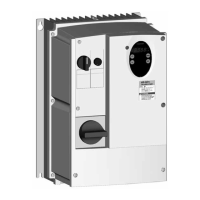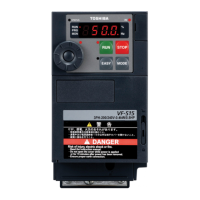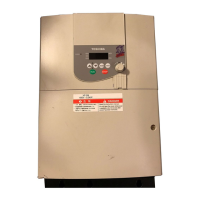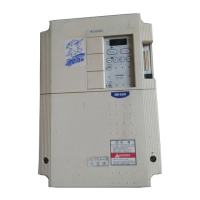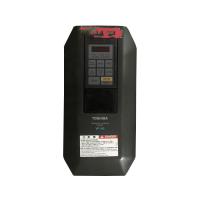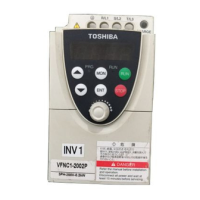E6582175
M-11
13.4 How to determine the causes of other problems
The following table provides a listing of other problems, their possible causes and remedies.
Problems Causes and remedies
The motor runs in the
wrong direction.
Invert the phases of the output terminals U/T1, V/T2 and W/T3.
Invert the forward/reverse run-signal terminals of the external input device.
(Refer to section 7.2.1)
Change the setting of the parameter in the case of panel operation.
The motor runs but its
speed does not change
normally.
The load is too heavy. Reduce the load.
The soft stall function is activated. Disable the soft stall function. (Refer to section 5.6)
The maximum frequency and the upper limit frequency are set too low.
Increase the maximum frequency and the upper limit frequency .
The frequency setting signal is too low. Check the signal set value, circuit, cables, etc.
Check the setting characteristics (point 1 and point 2 settings) of the frequency setting
signal parameters. (Refer to section 6.10.2)
If the motor runs at a low speed, check to see that the stall prevention function is
activated because the torque boost value is too large.
Adjust the torque boost value () and the acceleration time ().
(Refer to section 6.4 and 5.2)
The motor does not
accelerate or decelerate
smoothly.
The acceleration time () or the deceleration time () is set too short.
Increase the acceleration time () or the deceleration time ().
A too large current flows
into the motor.
The load is too heavy. Reduce the load.
If the motor runs at a low speed, check whether the torque boost value is too large.
(Refer to section 6.4)
The motor runs at a higher
or lower speed than the
specified one.
The motor has an improper voltage rating. Use a motor with a proper voltage rating.
The motor terminal voltage is too low.
Check the setting of the base frequency voltage parameter () . (Refer to section
5.5)
Replace the cable with a cable larger in diameter.
The reduction gear ratio, etc., are not set properly. Adjust the reduction gear ratio, etc.
The output frequency is not set correctly. Check the output frequency range.
Adjust the base frequency. (Refer to section 5.5)
The motor speed fluctuates
during operation.
The load is too heavy or too light. Reduce the load fluctuation.
The inverter or motor used does not have a rating large enough to drive the load.
Use an inverter or motor with a rating large enough.
Check whether the frequency setting signal changes.
If the V/F control selection parameter is set at 3, check the vector control setting,
operation conditions, etc. (Refer to section 6.3)
Parameter settings cannot
be changed.
Change the setting of the parameter setting selection prohibited parameter to
(enabled) if it is set to to 4 (prohibited).
Set the verification code to , if password has entered by the password setting
. (Refer to section 6.34.1)
Switch off the logic input terminal, if this terminal is assigned to input terminal
menu 200 to 203 (Parameter editing / reading prohibition).
For reasons of safety, some parameters cannot be reprogrammed while the inverter is
running. (Refer to section 11.9)
Inverter cannot
communicate.
Refer to “Appendix 4 T
oubleshooting” in “RS485 Communication Function
Instruction Manual” (E6581913).
How to cope with parameter setting-related problems
If you forget parameters
which have been reset
You can search for all reset parameters and change their settings.
* Refer to section 4.3.1 for details.
If you want to return all
reset parameters to their
respective default settings
You can return all parameters which have been reset to their default settings.
* Refer to section 4.3.2 for details.
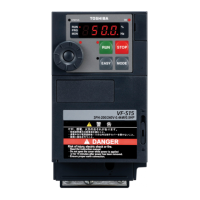
